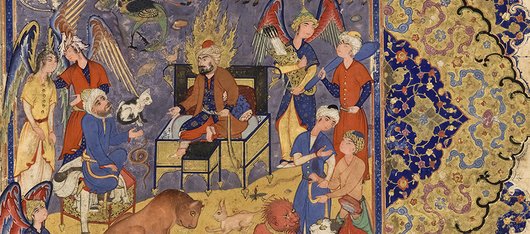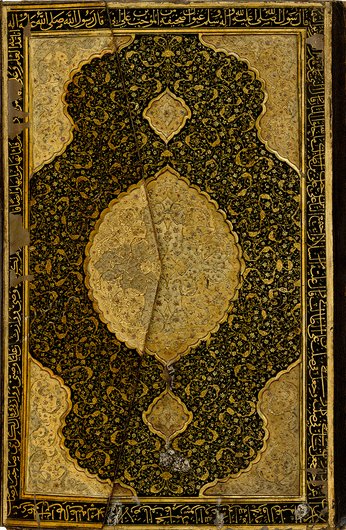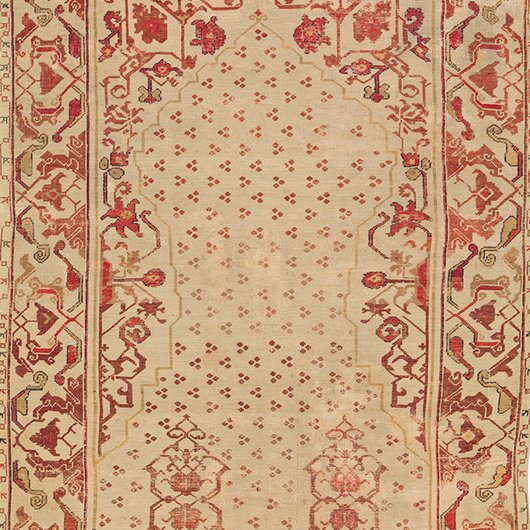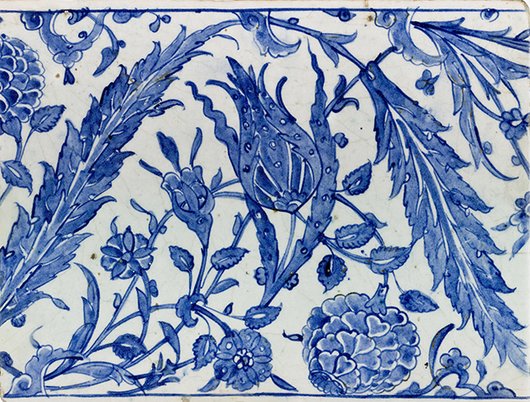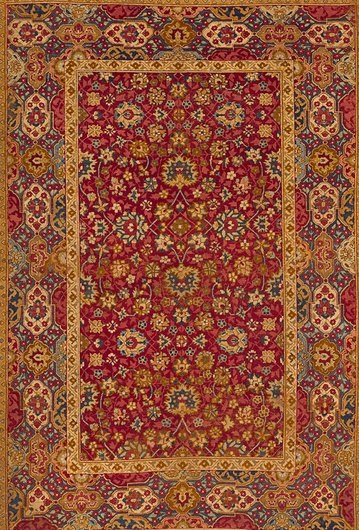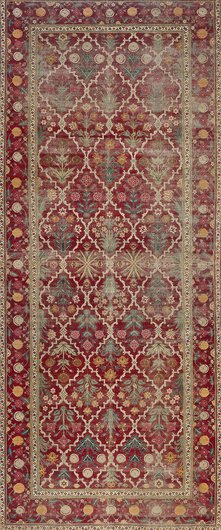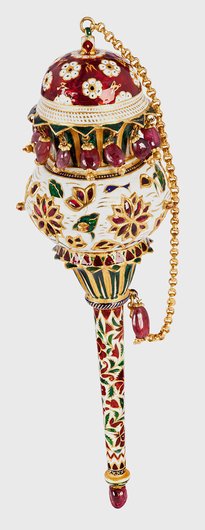Focusing on carpets as the prominent medium, manuscripts, metalwork, ceramics, and other objects are also featured to further illustrate the historical and artistic context of this time. Beginning with the Timurid period in Iran and Central Asia (1370–1507), this exhibition shows the continuation of artistic practices shared amongst succeeding and neighbouring dynasties, namely the Safavids in Iran (1501–1736), the Ottomans in Turkey (1299–1923) and the Mughals in India (1526–1857).
Imperial Threads: Motifs and artisans from Turkey, Iran and India
Past Exhibition
Imperial Threads: motifs and artisans from Turkey, Iran and India highlights the exchange of artistic and material cultures in the early modern era (16th– 19th century).
The Safavids (1501–1736)
The Safavids in Iran stood at the crossroads between the neighbouring Ottoman and Mughal Empires, having taken over more or less the same region as their predecessors, the Timurids. This period witnessed a profound development in the arts of the book, greatly supported by royal patrons and ateliers, and resulting in an original Safavid style of painting. In addition to manuscripts, textiles and carpets were produced in great number particularly during the reign of Shah ‘Abbas (r. 1587–1629), as trade with Europe advanced and state workshops were established in the new capital Isfahan, among other cities.
Between war, diplomatic relations and political changes, precious objects were transferred across borders between the Safavids and their neighbours, whether as gifts or war booty, and artists pursued careers from one workshop to another. The objects on display in this section reflect the exchanges and developments of this period, while highlighting particular motifs shared across different artistic mediums.
The Ottomans (1299–1923)
Although the Ottoman world was established at the turn of the 14th century, the arts truly flourished during the reign of Sulayman the Magnificent (r. 1520-1566). This era of geographic and economic expansion set the ground for cultural and artistic development that continued until the 19th century.
The Ottoman occupation of Northern Persia, especially Tabriz in 1514 and 1533 onwards where an important weaving centre was based, had a great impact on artistic output including the transfer of motifs and craftsmanship from Iran to Turkey. Cities like Istanbul, Iznik and Bursa played important roles in shaping the identity of Ottoman art. The objects presented in this section show the influence of Safavid art, in addition to Chinese art via the Timurids. They also highlight motifs such as the çintamani and the saz, which became characteristic of the Ottoman production.
The Mughals (1526–1857)
The Mughal dynasty was founded by Babur, a direct descendant and successor of the Timurids. Following him were Humayun, Akbar, Jahangir, Shah Jahan and Aurangzeb, who consolidated the empire and developed strong trade and cultural links with the Ottomans, Safavids and Europeans. The introduction of European prints to the Mughal libraries led to the use of patterns drawn from the natural history plates of these books, while Iranian artists supervised royal ateliers, especially manuscript workshops, during the time of Humayun (r. 1530–1556) and Akbar (r. 1556–1605).
This section of the exhibition shows how Mughal patronage and arts were a syncretism between existing Timurid traditions and Hindu culture, both adapting to the rise of Islam in India, associated with external influences from Turkey, Iran and Europe. This synthesis created a Mughal style where artisans became individual artists and where new subjects were introduced to the production.
